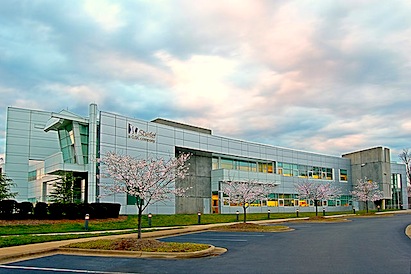Washington, D.C. – September 20, 2013 – The American Institute of Architects (AIA) today released its “Cities as a Lab: Designing the Innovation Economy” report that demonstrates how design can foster innovative approaches to American cities’ changing needs.
This report, released during the National Leadership Speaker Series: Resiliency & Security in the 21st Century at the National Press Club explores policy trends and experimentation taking place in cities around the globe.
The world is increasingly urbanizing with more than half of the world’s population living in urban areas and this is projected to grow to 70% by 2050. Cities and their wider metropolitan regions are increasingly asserting themselves as a fundamental unit of the global economy. U.S. metro regions comprise over one-third of the world’s 100 largest economies.
By melding innovative design with the increasing power of technological solutions, the report concludes that cities have the ability to adapt, innovate, and lead the way toward the future. Across the country, from robotic libraries to “makerspaces” that spark inventions, the report documents how offices and houses are being re-designed to meet new realities.
“As innovative as a cities may profess to be, resilience is a critical linchpin that any 21stcentury city must fully address. Resilience is the new Green.” said former AIA President Clark Manus, FAIA, CEO of Heller Manus Architects in San Francisco and Board of Director for Architecture for Humanity. “In 2011, the cost of urban disasters was estimated at over $380 billion and Congress is urged to appropriate ever-increasing funds each year to respond.
“Yet it‘s at the local level – in cities where people live and work – is where these disasters and the long, grueling recoveries that follow is felt in a profound way,” Manus said. “Not surprisingly, the local level is where much of the innovative thinking is taking place not just about disaster recovery, but in how we can lessen the impact from natural disasters by designing more resilient communities.”
Key examples cited in the report include:
- Boston Innovation District: Pioneering designers reshaped derelict wharves into a multidisciplinary hub for innovation and manufacturing, attracting 200 companies and 4,000 jobs to date.
- Research Triangle Park, North Carolina: Research parks experiment with layouts that create opportunities through proximity and knowledge exchange.
- Downtown Project, Las Vegas: An urban experiment in increasing meaningful chance encounters and thus productivity.
- 5M Project, San Francisco: A budding intentional community of over 1,000 art and technology firms inverts the development process to reinvent underused offices.
- TechShop: In tech hubs from the Bay Area to Pittsburgh, tinkerers launch a resurgence in American product design and small-scale manufacturing.
- The Plant, Chicago: A vertical farm feeds off city waste, growing produce and small food businesses in an abandoned meatpacking plant.
- Flexible Offices: At corporations, start-up nonprofits, and the federal government alike, 60-80% of office employees applaud new collaborative plans that enable effective work in a connected, paperless era.
- City Streets: A fresh focus on street design gives architects a new canvas for creative placemaking, reclaiming sidewalks and streets as social spaces.
- Temporary Architecture: Architects use pop-up buildings to experiment with new forms and ideas, from cutting-edge modular solar houses to an instant market.
- EcoDistricts: Districts can adopt innovative policies quickly, but are large enough to have significant impact without delaying implementation.
Cities as a Lab illustrates how the design and policy choices being made today are creating the great places of the future. Ideas and energy are flowing, because cities are the place to be, and great design serves as the critical linchpin. Innovative cities welcome and anticipate the social and technological shifts that have reshaped how people interact in the 21st century and are reconfiguring urban spaces to fit these new patterns.
About the American Institute of Architects
For over 150 years, members of the American Institute of Architects have worked with each other and their communities to create more valuable, healthy, secure, and sustainable buildings and cityscapes. Members adhere to a code of ethics and professional conduct to ensure the highest standards in professional practice. Embracing their responsibility to serve society, AIA members engage civic and government leaders and the public in helping find needed solutions to pressing issues facing our communities, institutions, nation and world. Visit www.aia.org.








